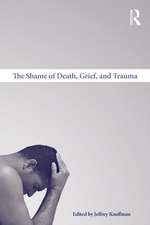Decision Points
Autor George W. Bushen Limba Engleză Hardback – 31 oct 2010
George W. Bush served as president of the United States during eight of the most consequential years in American history. The decisions that reached his desk impacted people around the world and defined the times in which we live.
Decision Points brings readers inside the Texas governor’s mansion on the night of the 2000 election, aboard Air Force One during the harrowing hours after the attacks of September 11, 2001, into the Situation Room moments before the start of the war in Iraq, and behind the scenes at the White House for many other historic presidential decisions.
For the first time, we learn President Bush’s perspective and insights on:
His decision to quit drinking and the journey that led him to his Christian faith
The selection of the vice president, secretary of defense, secretary of state, Supreme Court justices, and other key officials
His relationships with his wife, daughters, and parents, including heartfelt letters between the president and his father on the eve of the Iraq War
His administration’s counterterrorism programs, including the CIA’s enhanced interrogations and the Terrorist Surveillance Program
Why the worst moment of the presidency was hearing accusations that race played a role in the federal government’s response to Hurricane Katrina, and a critical assessment of what he would have done differently during the crisis
His deep concern that Iraq could turn into a defeat costlier than Vietnam, and how he decided to defy public opinion by ordering the troop surge
His legislative achievements, including tax cuts and reforming education and Medicare, as well as his setbacks, including Social Security and immigration reform
The relationships he forged with other world leaders, including an honest assessment of those he did and didn’t trust
Why the failure to bring Osama bin Laden to justice ranks as his biggest disappointment and why his success in denying the terrorists their fondest wish—attacking America again—is among his proudest achievements
A groundbreaking new brand of presidential memoir, Decision Points will captivate supporters, surprise critics, and change perspectives on eight remarkable years in American history—and on the man at the center of events.
| Toate formatele și edițiile | Preț | Express |
|---|---|---|
| Paperback (1) | 90.95 lei 23-34 zile | +51.64 lei 6-10 zile |
| Ebury Publishing – 7 iul 2011 | 90.95 lei 23-34 zile | +51.64 lei 6-10 zile |
| Hardback (1) | 232.30 lei 3-5 săpt. | |
| Crown Publishing Group (NY) – 31 oct 2010 | 232.30 lei 3-5 săpt. |
Preț: 232.30 lei
Nou
Puncte Express: 348
Preț estimativ în valută:
44.46€ • 45.93$ • 36.100£
44.46€ • 45.93$ • 36.100£
Carte disponibilă
Livrare economică 05-19 martie
Preluare comenzi: 021 569.72.76
Specificații
ISBN-13: 9780307590619
ISBN-10: 0307590615
Pagini: 497
Ilustrații: 2 16-PAGE 4-COLOR INSERTS AND 2 MAPS
Dimensiuni: 150 x 236 x 48 mm
Greutate: 0.93 kg
Editura: Crown Publishing Group (NY)
ISBN-10: 0307590615
Pagini: 497
Ilustrații: 2 16-PAGE 4-COLOR INSERTS AND 2 MAPS
Dimensiuni: 150 x 236 x 48 mm
Greutate: 0.93 kg
Editura: Crown Publishing Group (NY)
Extras
Excerpted from Decision Points Copyright © 2010 by George W. Bush
Surge
Years from now, historians may look back and see the surge as a forgone conclusion, an inevitable bridge between the years of violence that followed liberation and the democracy that emerged. Nothing about the surge felt inevitable at the time. Public opinion ran strongly against it. Congress tried to block it. The enemy fought relentlessly to break our will.
Yet thanks to the skill and courage of our troops, the new counterinsurgency strategy we adopted, the superb coordination between our civilian and military efforts, and the strong support we provided for Iraq’s political leaders, a war widely written off as a failure has a chance to end in success. By the time I left office, the violence had declined dramatically. Economic and political activity had resumed. Al Qaeda had suffered a significant military and ideological defeat. In March 2010, Iraqis went to the polls again. In a headline unimaginable three years earlier, Newsweek ran a cover story titled “Victory at Last: The Emergence of a Democratic Iraq.”
Iraq still faces challenges, and no one can know with certainty what the fate of the country will be. But we do know this: Because the United States liberated Iraq and then refused to abandon it, the people of that country have a chance to be free. Having come this far, I hope America will continue to support Iraq’s young democracy. If Iraqis request a continued troop presence, we should provide it. A free and peaceful Iraq is in our vital strategic interest. It can be a valuable ally at the heart of the Middle East, a source of stability in the region, and a beacon of hope to political reformers in its neighborhood and around the world. Like the democracies we helped build in Germany, Japan, and South Korea, a free Iraq will make us safer for generations to come.
I have often reflected on whether I should have ordered the surge earlier. For three years, our premise in Iraq was that political progress was the measure of success. The Iraqis hit all their milestones on time. It looked like our strategy was working. Only after the sectarian violence erupted in 2006 did it become clear that more security was needed before political progress could continue. After that, I moved forward with the surge in a way that unified our government. If I had acted sooner it could have created a rift that would have been exploited by war critics in Congress to cut off funding and prevent the surge from succeeding.
From the beginning of the war in Iraq, my conviction was that freedom is universal—and democracy in the Middle East would make the region more peaceful. There were times when that seemed unlikely. But I never lost faith that it was true.
Financial Crisis
“Mr. President, we are witnessing a financial panic.”
Those were troubling words coming from Ben Bernanke, the mild-mannered chairman of the Federal Reserve, who was seated across from me in the Roosevelt Room. Over the previous two weeks, the government had seized Fannie Mae and Freddie Mac, two giant housing entities. Lehman Brothers had filed the largest bankruptcy in American history. Merrill Lynch had been sold under duress. The Fed had granted an $85 billion loan to save AIG. Now Wachovia and Washington Mutual were teetering on the brink of collapse.
With so much turbulence in financial institutions, credit markets had seized up. Consumers couldn’t get loans for homes or cars. Small businesses couldn’t borrow to finance their operations. The stock market had taken its steepest plunge since the first day of trading after 9/11.
As we sat beneath the oil painting of Teddy Roosevelt charging on horseback, we all knew America was facing its most dire economic challenge in decades.
I turned to the Rough Rider of my financial team, Secretary of the Treasury Hank Paulson, a natural leader with decades of experience in international finance.
“The situation is extraordinarily serious,” Hank said.
He and the team briefed me on three measures to stem the crisis. First, the Treasury would guarantee all $3.5 trillion in money market mutual funds, which were facing depositor runs. Second, the Fed would launch a program to unfreeze the market for commercial paper, a key source of financing for businesses across the country. Third, the Securities and Exchange Commission would issue a rule temporarily preventing the short-selling of financial stocks.
“These are dramatic steps,” Hank said, “but America’s financial system is at stake.”
He outlined an even bolder proposal. “We need broad authority to buy mortgage-backed securities,” he said. Those complex financial assets had lost value when the housing bubble burst, imperiling the balance sheets of financial firms around the world. Hank recommended that we ask Congress for hundreds of billions to buy up these toxic assets and restore confidence in the banking system.
“Is this the worst crisis since the Great Depression?” I asked.
“Yes,” Ben replied. “In terms of the financial system, we have not seen anything like this since the 1930s, and it could get worse.”
His answer clarified the decision I faced: Did I want to be the president overseeing an economic calamity that could be worse than the Great Depression?
I was furious the situation had reached this point. A relatively small group of people—many on Wall Street, some not—had gambled that the housing market would keep booming forever. It didn’t. In a normal environment, the free market would render its judgment and they could fail. I would have been happy to let them do so.
But this was not a normal environment. The market had ceased to function. And as Ben had explained, the consequences of inaction would be catastrophic. As unfair as it was to use the American people’s money to prevent a collapse for which they weren’t responsible, it would be even more unfair to do nothing and leave them to suffer the consequences.
“Get to work,” I said, approving Hank’s plan in full. “We are going to solve this.”
I adjourned the meeting and walked across the hallway to the Oval Office. Josh Bolten, Counselor Ed Gillespie, and Dana Perino, my talented and effective press secretary, followed me in. Ben’s historical comparison was still echoing in my mind.
“If we’re really looking at another Great Depression,” I said, “you can be damn sure I’m going to be Roosevelt, not Hoover.”
Surge
Years from now, historians may look back and see the surge as a forgone conclusion, an inevitable bridge between the years of violence that followed liberation and the democracy that emerged. Nothing about the surge felt inevitable at the time. Public opinion ran strongly against it. Congress tried to block it. The enemy fought relentlessly to break our will.
Yet thanks to the skill and courage of our troops, the new counterinsurgency strategy we adopted, the superb coordination between our civilian and military efforts, and the strong support we provided for Iraq’s political leaders, a war widely written off as a failure has a chance to end in success. By the time I left office, the violence had declined dramatically. Economic and political activity had resumed. Al Qaeda had suffered a significant military and ideological defeat. In March 2010, Iraqis went to the polls again. In a headline unimaginable three years earlier, Newsweek ran a cover story titled “Victory at Last: The Emergence of a Democratic Iraq.”
Iraq still faces challenges, and no one can know with certainty what the fate of the country will be. But we do know this: Because the United States liberated Iraq and then refused to abandon it, the people of that country have a chance to be free. Having come this far, I hope America will continue to support Iraq’s young democracy. If Iraqis request a continued troop presence, we should provide it. A free and peaceful Iraq is in our vital strategic interest. It can be a valuable ally at the heart of the Middle East, a source of stability in the region, and a beacon of hope to political reformers in its neighborhood and around the world. Like the democracies we helped build in Germany, Japan, and South Korea, a free Iraq will make us safer for generations to come.
I have often reflected on whether I should have ordered the surge earlier. For three years, our premise in Iraq was that political progress was the measure of success. The Iraqis hit all their milestones on time. It looked like our strategy was working. Only after the sectarian violence erupted in 2006 did it become clear that more security was needed before political progress could continue. After that, I moved forward with the surge in a way that unified our government. If I had acted sooner it could have created a rift that would have been exploited by war critics in Congress to cut off funding and prevent the surge from succeeding.
From the beginning of the war in Iraq, my conviction was that freedom is universal—and democracy in the Middle East would make the region more peaceful. There were times when that seemed unlikely. But I never lost faith that it was true.
Financial Crisis
“Mr. President, we are witnessing a financial panic.”
Those were troubling words coming from Ben Bernanke, the mild-mannered chairman of the Federal Reserve, who was seated across from me in the Roosevelt Room. Over the previous two weeks, the government had seized Fannie Mae and Freddie Mac, two giant housing entities. Lehman Brothers had filed the largest bankruptcy in American history. Merrill Lynch had been sold under duress. The Fed had granted an $85 billion loan to save AIG. Now Wachovia and Washington Mutual were teetering on the brink of collapse.
With so much turbulence in financial institutions, credit markets had seized up. Consumers couldn’t get loans for homes or cars. Small businesses couldn’t borrow to finance their operations. The stock market had taken its steepest plunge since the first day of trading after 9/11.
As we sat beneath the oil painting of Teddy Roosevelt charging on horseback, we all knew America was facing its most dire economic challenge in decades.
I turned to the Rough Rider of my financial team, Secretary of the Treasury Hank Paulson, a natural leader with decades of experience in international finance.
“The situation is extraordinarily serious,” Hank said.
He and the team briefed me on three measures to stem the crisis. First, the Treasury would guarantee all $3.5 trillion in money market mutual funds, which were facing depositor runs. Second, the Fed would launch a program to unfreeze the market for commercial paper, a key source of financing for businesses across the country. Third, the Securities and Exchange Commission would issue a rule temporarily preventing the short-selling of financial stocks.
“These are dramatic steps,” Hank said, “but America’s financial system is at stake.”
He outlined an even bolder proposal. “We need broad authority to buy mortgage-backed securities,” he said. Those complex financial assets had lost value when the housing bubble burst, imperiling the balance sheets of financial firms around the world. Hank recommended that we ask Congress for hundreds of billions to buy up these toxic assets and restore confidence in the banking system.
“Is this the worst crisis since the Great Depression?” I asked.
“Yes,” Ben replied. “In terms of the financial system, we have not seen anything like this since the 1930s, and it could get worse.”
His answer clarified the decision I faced: Did I want to be the president overseeing an economic calamity that could be worse than the Great Depression?
I was furious the situation had reached this point. A relatively small group of people—many on Wall Street, some not—had gambled that the housing market would keep booming forever. It didn’t. In a normal environment, the free market would render its judgment and they could fail. I would have been happy to let them do so.
But this was not a normal environment. The market had ceased to function. And as Ben had explained, the consequences of inaction would be catastrophic. As unfair as it was to use the American people’s money to prevent a collapse for which they weren’t responsible, it would be even more unfair to do nothing and leave them to suffer the consequences.
“Get to work,” I said, approving Hank’s plan in full. “We are going to solve this.”
I adjourned the meeting and walked across the hallway to the Oval Office. Josh Bolten, Counselor Ed Gillespie, and Dana Perino, my talented and effective press secretary, followed me in. Ben’s historical comparison was still echoing in my mind.
“If we’re really looking at another Great Depression,” I said, “you can be damn sure I’m going to be Roosevelt, not Hoover.”
Notă biografică
Since leaving office, PRESIDENT GEORGE W. BUSH has led the George W. Bush Presidential Center at Southern Methodist University in Dallas, Texas. The center includes an active policy institute working to advance initiatives in the fields of education reform, global health, economic growth, and human freedom, with a special emphasis on promoting social entrepreneurship and creating opportunities for women around the world. It will also house an official government archive and a state-of-the-art museum that will open in 2013.
Descriere
Shattering the conventions of political autobiography, President George W. Bush offers a strikingly candid journey through the defining decisions of his life--of his presidency and in his personal life--in gripping, never-before-heard detail.

















